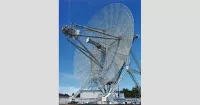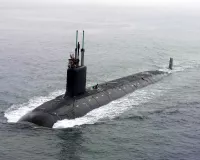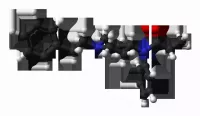The BGM-109 Tomahawk Land Attack Missile (TLAM) is a long-range, all-weather, jet-powered, subsonic cruise missile. It is used by the United States Navy, Royal Australian Navy and Royal Navy for land-attack operations from ships and submarines. It is an American invention.
1964: Fingerprint Technology Developed
In 1964, "Fingerprint" technology was developed for the SLAM. TERCOM was based on, and was a significant improvement on this technology.
January 1981: Tomahawk Block II Testing Begins
In January 1981, testing began for the Tomahawk Block II variants, continuing until October 1983.
October 1983: Tomahawk Block II Testing Ends
In October 1983, testing for the Tomahawk Block II variants ended after starting in January 1981.
1984: Tomahawk Block II Deployment
In 1984, the Tomahawk Block II variants were deployed, featuring improvements such as an improved booster rocket, cruise missile radar altimeter, and navigation through the Digital Scene Matching Area Corellator (DSMAC).
1987: Intermediate-Range Nuclear Forces Treaty
In 1987, BGM-109G Gryphon Ground Launched Cruise Missiles (GLCM) and their launch vehicles were withdrawn from service in Europe to comply with the Intermediate-Range Nuclear Forces Treaty.
1987: Intermediate-Range Nuclear Forces Treaty (INF Treaty)
In 1987, the Intermediate-Range Nuclear Forces Treaty (INF Treaty) was established, leading to the dismantling or withdrawal of nuclear and conventional ground-launched ballistic missiles, cruise missiles, and missile launchers with specified ranges from Europe by June 1, 1991.
June 1991: Intermediate-Range Nuclear Forces Treaty deadline
To comply with the 1987 Intermediate-Range Nuclear Forces Treaty (INF Treaty), all nuclear and conventional ground-launched ballistic missiles, cruise missiles, and missile launchers with ranges of 310 to 620 miles (500 to 1,000 km) (short to medium-range) and 620 to 3,420 miles (1,000 to 5,500 km) (intermediate-range) were dismantled or withdrawn from Europe by the treaty's deadline of 1 June 1991.
1992: McDonnell Douglas Sole Supplier
In 1992, McDonnell Douglas became the sole supplier of Tomahawk missiles, producing Block II and Block III versions. Hughes Aircraft purchased General Dynamics' missile division that same year.
1993: Block III TLAMs Enter Service
In 1993, the Block III TLAMs entered service, featuring turbofan engines for extended range and GPS receivers for improved accuracy. These TLAMs also retained the Digital Scene Matching Area Correlation (DSMAC) II navigation system, offering multiple navigation modes.
1993: Tomahawk Block III Introduced
In 1993, the Tomahawk Block III was introduced, adding time-of-arrival control, improved accuracy for Digital Scene Matching Area Correlator (DSMAC) and jam-resistant GPS, a smaller, lighter WDU-36 warhead, engine improvements, and an extended missile range.
1994: Hughes Aircraft Becomes Sole Supplier
In 1994, Hughes Aircraft outbid McDonnell Douglas to become the sole supplier of Tomahawk missiles, after purchasing General Dynamics' missile division in 1992.
1995: Hughes and Raytheon Joint Venture
In 1995, a joint venture between Hughes and Raytheon began manufacturing the Tomahawk missile.
1995: US Agrees to Sell Tomahawks to UK
In 1995, the US agreed to sell 65 Tomahawk missiles to the UK for torpedo-launch from their nuclear attack submarines.
1997: Raytheon Acquires Hughes
In 1997, Raytheon acquired Hughes, solidifying their position as the sole supplier of Tomahawk missiles.
November 1998: UK Acquires and Test-Fires Tomahawks
In November 1998, the first Tomahawk missiles were acquired and test-fired by the UK.
2000: US denies Tomahawk sale to Israel
In 2000, the US government refused an Israeli request to purchase Tomahawk SLCMs because of international Missile Technology Control Regime proliferation rules.
2002: Spain expresses initial interest in Tomahawk system
In 2002, Spain expressed initial interest in acquiring the Tomahawk system.
April 2004: UK and US agreement for Tomahawk purchase
In April 2004, the UK and US governments reached an agreement for the British to buy 64 of the new generation of Tomahawk missile—the Block IV or TacTom missile.
2004: Tactical Tomahawk Weapons Control System Enters Service
In late 2004, the Tactical Tomahawk Weapons Control System (TTWCS) entered service with the US Navy. TTWCS allows commanders to redirect the missile to alternative targets and provides the capability for limited mission planning on board the firing unit (FRU).
2005: Spain shows continued interest in Tomahawk system
In 2005, Spain showed continued interest in acquiring the Tomahawk system.
2005: Initial interest and planning by Dutch Ministry of Defence
In 2005, the Dutch Ministry of Defence expressed initial interest and began planning for the acquisition of Tomahawk missiles.
2006: Tomahawk Block IV Introduced
In 2006, Tomahawk Block IV was introduced, adding the strike controller, which can change the missile in flight to one of 15 preprogrammed alternate targets or redirect it to a new target. Block IV also has an improved anti-jam GPS receiver.
March 2008: Tomahawk missile enters service with Royal Navy
On 27 March 2008, the Tomahawk missile Block IV entered service with the Royal Navy, three months ahead of schedule.
2009: Spain cancels Tomahawk system order
In 2009, Spain cancelled its order for the Tomahawk system.
August 2010: Navy Completes First Live Test of JMEWS
On 16 August 2010, the Navy completed the first live test of the Joint Multi-Effects Warhead System (JMEWS), a new warhead designed to give the Tomahawk enhanced penetration and blast-fragmentation capabilities. In the static test, the warhead detonated and created a hole large enough for the follow-through element to completely penetrate the concrete target.
2011: Tomahawk missile costs in British books
As of 2011, the Block III Tomahawk missiles were on British books at £1.1m and the Block IV at £0.87m including VAT.
2012: USN Studies AARGM Technology Application
In 2012, the USN studied applying Advanced Anti-Radiation Guided Missile (AARGM) technology into the Tactical Tomahawk.
February 2014: US Central Command Sponsors JMEWS Development and Testing
In February 2014, US Central Command sponsored development and testing of the JMEWS, analyzing the ability of the programmable warhead to integrate onto the Block IV Tomahawk, giving the missile bunker buster effects to better penetrate hardened structures.
July 2014: US approves sale of Tomahawk missiles to UK
In July 2014, the US approved the sale to the UK of a further 65 submarine-launched Block IV Tomahawk missiles at a cost of US$140m including spares and support.
2014: Raytheon Tests Block IV Improvements
In 2014, Raytheon began testing Block IV improvements to attack sea and moving land targets. The new passive radar seeker will pick up the electromagnetic radar signature of a target and follow it, and actively send out a signal to bounce off potential targets before impact to discriminate its legitimacy before impact.
October 2015: Tomahawk Demonstrates New Capabilities in Test Launch
In October 2015, Raytheon announced the Tomahawk demonstrated new capabilities in a test launch, using its onboard camera to take a reconnaissance photo and transmit it to fleet headquarters. It then entered a loitering pattern until given new targeting coordinates to strike.
2015: Poland expresses interest in Tomahawk missiles
In 2015, Poland expressed interest in purchasing long-range Tomahawk missiles for its future submarines.
January 2016: Los Alamos National Laboratory Working on Fuel Air Explosive
By January 2016, Los Alamos National Laboratory was working on a project to turn unburned fuel left over when a Tomahawk reaches its target into an additional explosive force, effectively creating a fuel air explosive.
2016: US DoD Purchases Tomahawk Missiles
In 2016, the US Department of Defense purchased 149 Tomahawk Block IV missiles for $202.3 million.
August 2019: US Navy Conducts Test Flight of Ground-Launched Tomahawk
On 18 August 2019, the United States Navy conducted a test flight of a Tomahawk missile launched from a ground-based version of the Mark 41 Vertical Launch System. It was the United States' first acknowledged launch of a missile that would have violated the 1987 Intermediate-Range Nuclear Forces Treaty, from which the Trump administration withdrew on 2 August.
November 2020: US Army Selects Tomahawk for Mid-Range Capability
In November 2020, the United States Army selected the Tomahawk to fulfill its Mid-Range Capability (MRC), giving it a land-based long-range missile capable of striking ground and sea targets. The Army plans to use the Tomahawk alongside a ground-based SM-6.
2020: Los Alamos Using Corn Ethanol for Tomahawk Fuel
In 2020, Los Alamos National Laboratory reported that it would use corn ethanol to produce domestic fuel for Tomahawk missiles, which also does not require harsh acids to manufacture, compared to petroleum-based JP-10.
March 2021: Tomahawk Block V Introduced
In March 2021, Tomahawk Block V was introduced with improvements to navigation and in-flight targeting. The initial batch of Block V was delivered. Block Va, the Maritime Strike Tomahawk (MST), and Block Vb outfitted with the JMEWS warhead were scheduled to be released after the initial delivery.
2021: Maritime Attack Capability Block IV TLAMs Scheduled to Enter Service
In 2021, the first Block IV TLAMs modified with a maritime attack capability were scheduled to enter service.
May 2022: Defense Department Announces Tomahawk Missile Contract
In May 2022, the Defense Department announced a contract to buy Tomahawk missiles for the Navy, the Army, and the Marine Corps.
June 2022: UK announces Tomahawk cruise missile upgrade
In June 2022, the UK announced it would be upgrading its Tomahawk cruise missiles to Block V standard through a £265 million contract with the US government.
2022: Plans for acquiring long-range weapons for Royal Netherlands Navy announced
In 2022, plans for acquiring long-range and precision-guided weapon systems for the frigates and submarines of The Royal Netherlands Navy were announced as part of the Strategic Defence Review 2022, and the Tomahawk missile was identified.
March 2023: US approves Tomahawk missile sale to Australia
In March 2023, the US State Department approved a Foreign Military Sale to Australia of up 200 Block V and up to 20 Block IV Tomahawk missiles worth an estimated US$895 million.
March 2023: Maritime strike capability project approved for Netherlands Navy
In March 2023, the commander of the Royal Netherlands Navy announced that the project to acquire maritime strike capability had been approved by the Ministry of Defence, and would include both the De Zeven Provinciën-class frigates and the Walrus-class submarines. The Tomahawk missile was confirmed as the frigates and submarines are equipped with US-standard Mark 41 Vertical Launching System, and torpedo tubes suited for launching UGM-109 Tomahawk respectively.
April 2023: Netherlands Ministry of Defence announces Tomahawk procurement
In April 2023, the Netherlands Ministry of Defence announced the procurement of Tomahawk missiles.
November 2023: US approves Tomahawk missile sale to Japan
On 17 November 2023, the US Defense Security and Cooperation Agency announced that the US State Department had approved a possible sale of up to 200 RGM-109E Tomahawk Block IV and up to 200 RGM-109E Tomahawk Block V LACMs to Japan for an estimated US$2.35 billion.
2023: Netherlands confirms ordering Tomahawk missiles
In 2023, the Dutch Ministry of Defence confirmed ordering the ship-launched and submarine-launched versions of the Tomahawk missile to be installed on both existing as well as future frigates & submarines.
2023: Army Plans to Field Tomahawk
The Army plans to use the Tomahawk alongside a ground-based SM-6 and field them by late 2023.
January 2024: US approves sale of support equipment to Australia
In January 2024, the US State Department approved the sale of support equipment worth US$250 million for Tomahawk missiles to Australia.
July 2024: US and Germany announce long-range fires units deployments
On 10 July 2024, a joint statement of the US and Germany was released, announcing the beginning of episodic deployments of long-range fires units with conventional warheads, including Typhon missile launchers with SM-6 and Tomahawk missiles. On 28 July 2024, Putin warned of a Cold War-style missile crisis and threatened to deploy long-range missiles within striking distance of the West after the United States announced its intention to deploy long-range missiles in Germany. Critics say the United States' move would trigger a new arms race.
December 2024: Australia successfully fires first Tomahawk missile
In December 2024, Australia's Minister for Defence announced that the RAN had successfully fired its first ever Tomahawk missile from HMAS Brisbane (DDG 41), a Hobart-class air warfare destroyer, making Australia the third nation to acquire and fire the weapon.
2024: Raytheon Sole Manufacturer
As of 2024, Raytheon remains the sole manufacturer of non-nuclear, sea-launched Tomahawk variants.
2024: Tomahawk cruise missiles upgrade starts
The upgrade of the UK's Tomahawk cruise missiles to Block V standard is scheduled to start in 2024.
March 2025: HNLMS De Ruyter launches Tomahawk missile for the first time
On 11 March 2025, the air defense and command frigate HNLMS De Ruyter launched a Tomahawk missile for the first time off the coast of Norfolk, United States. It was the first time a Dutch naval ship fired this type of missile.
2025: Maritime Strike Tomahawk Operational on Destroyers
In 2025, a spokesperson for the U.S. Navy's Tomahawk program announced that the Maritime Strike Tomahawk (MST) would be operational on destroyers by the end of September, with deployment to attack submarines to follow in FY26. All Block IV Tomahawks will be converted to Block V standard, while the remaining Block III missiles will be retired and demilitarized.
2026: Deployment of long-range fires units starts
Deployment of long-range fires units with conventional warheads will start from 2026, including Typhon missile launchers with SM-6 and Tomahawk missiles.
2026: Tomahawk missile deployment in Japan
The Tomahawk missiles purchased by Japan are expected to be deployed in fiscal year 2026-27 and will serve as a bridge until the deployment of indigenous missiles.
Mentioned in this timeline
The United States of America is a federal republic located...

Radar is a radiodetermination system using radio waves to detect...

A submarine is a watercraft capable of independent operation underwater...
The Cold War - was a geopolitical rivalry between the...
Germany officially the Federal Republic of Germany is a Central...
Japan is an East Asian island country in the Pacific...
Trending

15 minutes ago Ohtani inspires two-way dreams, Rickwood Field considered, Dodgers celebrate historic game.

Steven Tyler born Steven Victor Tallarico is an iconic American singer songwriter and multi-instrumentalist most famous as the frontman of...

15 minutes ago Sam Hauser's defensive presence grows, impacting Celtics' performance and team dynamics positively.

6 months ago China considers fentanyl offer to US for trade talks, boosting stock market hopes.

6 months ago Donovan Mitchell Starts Crucial Game 5 Despite Ankle Injury: Cavs Face Pacers

Joe Montana nicknamed Joe Cool and the Comeback Kid is considered one of the NFL's greatest quarterbacks Playing seasons primarily...
Popular

Gavin Newsom is an American politician and businessman currently serving...

The White House located at Pennsylvania Avenue NW in Washington...

George Soros is a Hungarian-American investor and philanthropist with a...

Doug Ford is a Canadian politician and businessman currently serving...

XXXTentacion born Jahseh Dwayne Ricardo Onfroy was a controversial yet...

Charlie Kirk is an American right-wing political activist entrepreneur and...